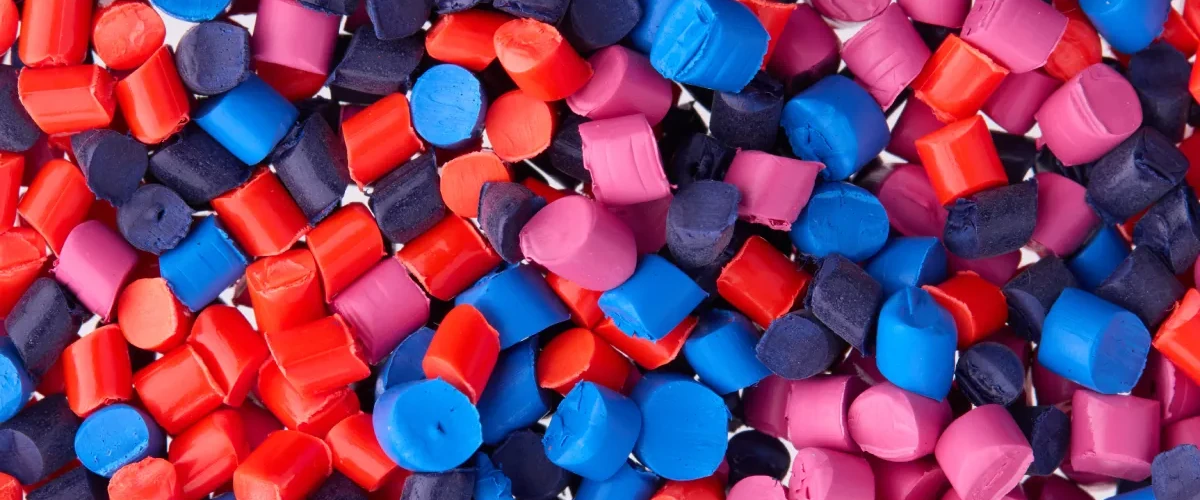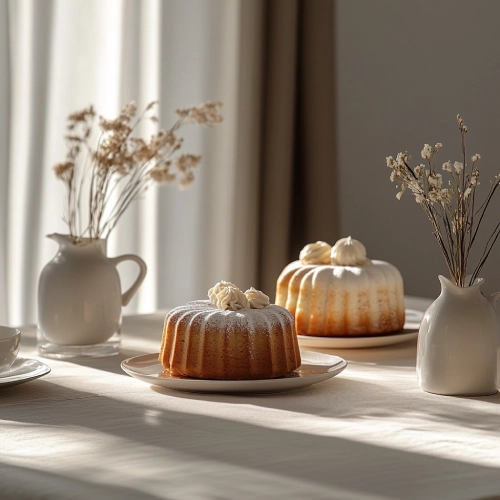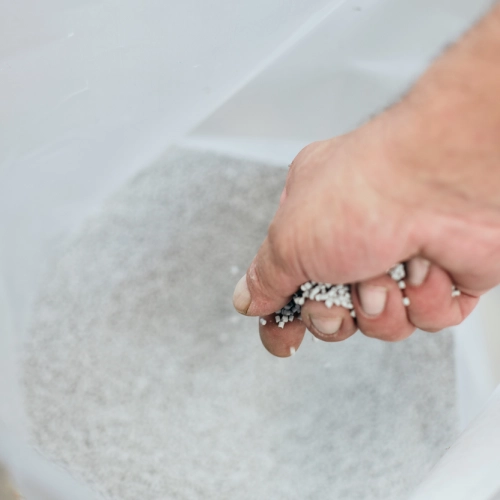
Monobatch Gaypa Ready-to-Use Plastic Colors
Plastic colors dedicated to compound
The dream for many compound producers and polymer processors is not having to worry about color. With everything there is to do when creating a new product, also having to handle pigments to achieve a precise shade is not a small task. In fact, let's be honest, self-coloring is the ideal dream. But is this fantasy really that utopian? Actually, no. There are special plastic colors that can relieve compounders from the burden of managing powdered pigments, ready-to-use to assist them in their projects. Curious? Let’s discover them together.
Powdered Pigments and Plastic: A Difficult Relationship
“You can’t just throw loose pigment into the plastic compound.” Period. A great mentor in the industry was very clear about this. But why? Pigments distributed by chemical manufacturers are usually in powder form, and handling them can be very complicated. First of all, they cause a lot of mess, and a company attentive to prevent various types of contamination may struggle both in terms of storage and with machine management of these plastic colors. Additionally, polymer resin needs to melt to be processed, and its viscous consistency doesn’t mix well with thin and particulate ingredients like powdered pigments. Mixing them can create clumps that are extremely difficult to separate. A poorly dispersed pigment is a real waste because it performs much less efficiently. It's estimated that more than 10% can be lost! — And pigments are pretty expensive, too. —
Monobatch: Unique Plastic Colors
So, how can you color plastic? You need an intermediate step, where the powdered pigment is combined with a polymer resin for better processing. However, this is not so simple, it requires significant technical expertise. The pure powdered pigments, properly prepared, are dispersed at their maximum efficiency (that is, without clumps) within the polymer. Once ready, they become real ready-to-use plastic colors with maximized performance. All the compounder has to do is add them to their compound. Each formulation of these products, which we call Monobatch, contains only a single pigment. This ensures it to perfectly match its reference color index, remaining genuine. So, if you want to create an ad hoc custom shade, you just need to combine multiple Monobatch colors together, just like in art class when you mix paints.

A Master-Chef’s Job
Monobatch is a cool product because it standardizes the result. For those working with compounds, finding plastic colors with consistent performance isn’t easy. Let’s use a culinary example: imagine you’re in a cooking competition, where you have to make the same cake every day for a week, and it has to be identical each time. The first day it went well. The second day, you take the butter out of the fridge too late, so it's harder, and you end up with a slightly different result. The next day, your hands are tired from kneading, and there is a bit more clumping in the flour, so you get another different result again, and so on… it is practically impossible for the final product to be perfectly identical every time!
The “Ready-to-Use Mix” Trick
The solution to achieving consistent results is to have "ready-made mixes." For example, one trick to make the cake is to create a mix of flour, sugar, and salt in advance and use that mix for all the preparations. Or, you could prepare a blend of butter and milk and store it at a constant temperature. This way, when it's time to make the cake again, all you have to do is assemble the pre-prepared ingredients. Monobatch plastic colors work the same way: pigment and polymer mixtures are prepared in advance, instead of mixing many various powders each time. This significantly speeds up the process and helps achieve more homogeneous results.

Further Advantages of Monobatch
Actually, it is possible to work directly with pigment powder mixtures. However, coloring with powder requires constant monitoring, with the risk of only discovering color deviation during the production phase. This forces you to start over or make quick “on-the-fly adjustments.” But still, for such corrections, you need very wide color tolerances, and the risk of color drift becomes very high. On one hand, making Monobatches involves an additional step and therefore an additional cost, but on the other hand, the direct use of powder pigments still implies poor dispersion and therefore a waste of pigment. As previously mentioned, poorly dispersed pigment won’t have good coloring strength, so you will need to use more product to achieve a full shade.
Sustainable Plastic Colors for All
Using semi-finished plastic colors like Monobatch is also good for the work environment! The problem always concerns powder (and so, dust): it involves recurring drastic cleaning of the machinery, especially to make color changes (cleaning up the flour scattered around the kitchen is a disaster!). While semi-finished products make much less mess because the pigment is already encapsulated in granules, which are much easier to manage in terms of order, cleanliness, and environmental dispersion. Furthermore, the pigments contained within the plastic colors in granular format are inert. This means that the work environment is healthier for compound industry operators, as they avoid direct contact (especially by air) with potentially toxic chemical materials.

Are you Looking for Plastic Colors?
We’ve got just what you need! Come discover our Monobatch line, you won’t be disappointed. Contact our experts.